CAA News Today
Rebecca Uchill is the New Web Editor for Art Journal Open
posted by CAA — June 01, 2017
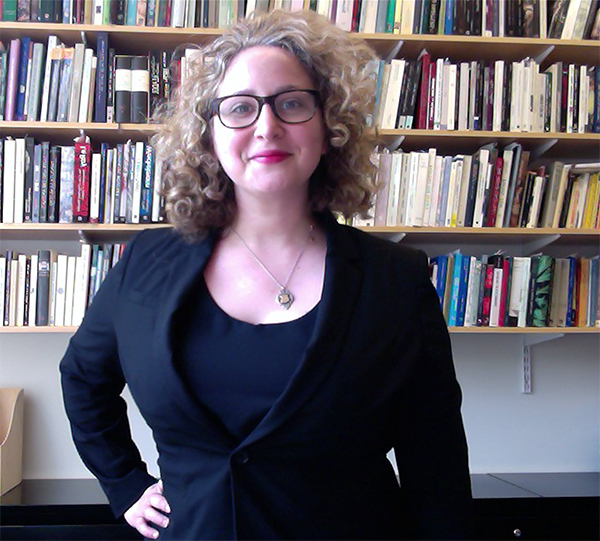
Rebecca Uchill
CAA’s president, Suzanne Preston Blier, has appointed Rebecca Uchill as the new web editor for Art Journal Open, endorsing the recommendation of the editorial board of Art Journal. Uchill, who currently is a Mellon Postdoctoral Fellow with the Center for Art, Science, and Technology at the Massachusetts Institute of Technology, joins the College of Visual and Performing Arts at UMass Dartmouth in September as a full-time lecturer. Uchill’s three-year term for Art Journal Open commences on July 1, 2017; she succeeds inaugural web editor Gloria Sutton, assistant professor of contemporary art history and new media at Northeastern University. During her term, Uchill will be responsible for commissioning and vetting content for the website, including artist projects and essays. She will serve on the Art Journal editorial board.
Uchill is the coeditor (with Caroline A. Jones and David Mather) of Experience: Culture, Cognition, and the Common Sense (MIT Press, 2016), as well as curator of the artist entries for the volume. She organizes interdisciplinary events and programs, including the recent “Being Material” symposium at MIT and a series of curatorial experiments with the collaborative Experience Economies. Uchill has published in journals such as Future Anterior, Museum and Curatorial Studies Review, Visual Resources: An International Journal of Documentation, and Journal of Curatorial Studies. She has curated exhibitions at Harvard University’s Carpenter Center for the Visual Arts, the Indianapolis Museum of Art, and Mass MoCA. Uchill earned her PhD in history, theory, and criticism of art at MIT in 2015.
CAA welcomes Rebecca Uchill to Art Journal Open.
Art Journal Open welcomes proposals for artists’ projects, critical writing, and other contributions, on a rolling basis. Please see the submission guidelines here. Submissions are accepted via e-mail to art.journal.open@collegeart.org.
CAA Salutes Its Fifty-Year Members
posted by CAA — May 18, 2017
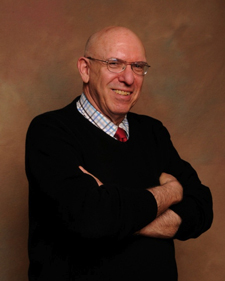
Gabriel Weisberg joined CAA in 1967
CAA warmly thanks the many contributions of the following dedicated members who joined the organization in 1967 or earlier.
1967: R. Ward Bissell, D. Sherman Clarke, Christie Fengler-Stephany, Dorothy Gillerman, Eric Hirshler, Renata Holod, Claire Kelleher, Alison Kettering, Dale Kinney, Marjorie Kinsey, Franklin K. B. Toker, Deborah Waite, Gabriel Weisberg, and David Wilkins.
1966: Madeline Caviness, Gilbert Edelson, Jonathan Fineberg, Ann Sutherland Harris, Sara Henry, Cecelia Klein, Henry Klein, Anne-Marie Logan, Peter Moak, Anne Morganstern, James Morganstern, Peter Schabacker, David Sokol, Marcia Werner, and Barbara White.
1965: Jean Borgatti, Norma Broude, Wanda Corn, Elaine Gazda, Diana Gisolfi, Dorothy Glass, Andree Hayum, Ellen Kosmer, Lillian MacBrayne, Jerry Meyer, Ann Lee Morgan, Myra Rosenfeld-Little, Ted Stebbins, Eugenia Summer, MaryJo Viola, Michele Vishny, and Wallace Weston.
1964: Richard Betts, Ruth Bowman, Vivian Cameron, Kathleen Cohen, Paula Gerson, Ronald Johnson, Jim Jordan, William Kloss, Rose-Carol Long, Phyllis Anina Moriarty, Annie Shaver-Crandell, and Alan Wallach.
1963: Lilian Armstrong, Richard Brilliant, Vivian Ebersman, Francoise Forster-Hahn, Caroline Houser, Susan Koslow, E. Solomon, Lauren Soth, Richard Spear, Virginia Stotz, Roxanna Sway, Athena Tacha, and Roger Welchans.
1962: Jo Anne Bernstein, Jacquelyn Clinton, Shirley Crosman, Frances Fergusson, Gloria Fiero, Jaroslav Folda, Harlan Holladay, Seymour Howard, David Merrill, John Paoletti, Aimee Brown Price, Thomas Sloan, Elisabeth Stevens, Anne Betty Weinshenker, and William Wixom.
1961: Matthew Baigell, Margaret Diane David, Bowdoin Davis, David Farmer, J. Forbes, Isabelle Hyman, Clifton Olds, Marion Roberts, and Conrad Ross.
1960: Shirley Blum, Kathleen Brandt, Eugene Kleinbauer, Edward Navone, Linda Nochlin, and J. Pollitt.
1959: Geraldine Fowle, Carol Krinsky, James O’Gorman, and Ann Warren.
1958: Samuel Edgerton, Carla Lord, Damie Stillman, and Clare Vincent.
1957: Marcel Franciscono, Bruce Glaser, Jane Hutchison, and Susan McKillop.
1956: Svetlana Alpers, David Driskell, John Goelet, Joel Isaacson, and Jack Spector.
1955: Lola Gellman, Irving Lavin, and Suzanne Lewis.
1954: Franklin Hazlehurst, Thomas McCormick, Jules Prown, Irving Sandler, and Lucy Freeman Sandler.
1953: Dorathea Beard, Margaret McCormick, and Jack Wasserman.
1951: Wen C. Fong.
1950: Alan Fern.
1949: Dario Covi and Ann-Sofi Lindsten.
1947: Ellen Conant and Ilene Forsyth.
Staff Interview: Fernando Zelaya
posted by CAA — April 24, 2017
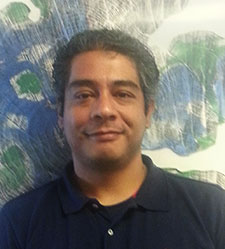 The next in a series of interviews with staff members is a conversation with Fernando Zelaya, CAA controller.
The next in a series of interviews with staff members is a conversation with Fernando Zelaya, CAA controller.
How long have you worked at CAA?
I have been at CAA since December 2012—four years, four months.
What do you do at CAA?
I am the controller, in the Finance Department.
What does CAA mean to you?
CAA to me is a medium for all art scholars to come together and be a part of a community. It’s also a place to share with each other, and to teach each other.
Can you talk about one of your favorite member moments?
Since I interact with members mostly at the conference, I’ll tell one story here and add another in the conference question later on. My favorite member moment was when I helped an elderly member who reminded me of my grandmother. She had such vigor and enthusiasm and seemed genuinely happy to be at the conference. That made my day.
What do you like best about the arts and working in the arts?
What I like best is meeting and working with artists. In my daily life and my earlier years, I had never interacted with artists. Now, having worked for the Dia Art Foundation as well as CAA, I have learned to appreciate art more than I used to, because now I better understand the meaning behind the art.
Do you have a favorite moment from the Annual Conference?
Once at registration I was berated by a flustered member who was late to a session and wanted to get his ticket quicker than was possible. The nice moment came when he returned to my booth after the session was over and gave me a sincere apology.
People interested in art can sometimes rebuff things like sports. But you’re interested in sports like soccer and baseball. Do you see a conflict?
I think that art and sports have more in common than people think. Both require years of hard work to perfect, and both need a combination of grace and power to achieve the objective of the piece (in art) or to score (in a game). It takes grace to stop a soccer ball or save a shot coming toward you at fifty to sixty miles per hour, or to hit a baseball with a bat when both objects are about three inches wide. That kind of skill, to me, is just as beautiful as a stroke of a brush or a poem that can draw a tear or bring about a smile.
You’re also interested in science fiction. Are there any new television shows or movies that have piqued your interest?
Science fiction is my favorite type of television show or movie. My favorite is Doctor Who, because of its sheer brilliance and how it has evolved over the last fifty-three years. The series even survived being off the air, only living in print and audio for almost ten years. The best new show I have seen this year is The Man in the High Castle, which takes us to a world where the Axis powers won WWII and have divided the United States among them. I am also a big fan of the Marvel and DC movies. I love these types of shows or movies because it is fun to immerse myself for a couple of hours—okay, maybe more than a couple—and go somewhere magical or even quite insane.
2017 TERRA FOUNDATION FOR AMERICAN ART INTERNATIONAL PUBLICATION GRANT WINNERS
posted by CAA — April 03, 2017
 CAA is pleased to announce the 2017 recipients of the Terra Foundation for American Art International Publication Grant. This program, which provides financial support for the publication of book-length scholarly manuscripts in the history of American art, is made possible by a generous grant from the Terra Foundation for American Art. For this grant, “American art” is defined as art (circa 1500–1980) of what is now the geographic United States.
CAA is pleased to announce the 2017 recipients of the Terra Foundation for American Art International Publication Grant. This program, which provides financial support for the publication of book-length scholarly manuscripts in the history of American art, is made possible by a generous grant from the Terra Foundation for American Art. For this grant, “American art” is defined as art (circa 1500–1980) of what is now the geographic United States.
“This year’s publication grant recipients demonstrate once again how this program serves the mission of advancing and internationalizing scholarship on American art,” says Francesca Rose, Program Director for Publications at the Terra Foundation for American Art. “Whether by funding translations or supporting original research in languages other than English and publications by early-career U.S. scholars, the 2017 publication grants allow for the dissemination of important scholarship to the global Americanist community. In addition, providing for travel to the CAA Annual Conference facilitates participation by non-U.S. authors in U.S. professional networks.”
The six Terra Foundation grantees for 2017 are:
- Philippe Artières, Attica, USA, 1971, Le Point du Jour
- Emily Burns, Transnational Frontiers: The Visual Culture of the American West in the French Imagination, 1867–1914, University of Oklahoma Press
- Sophie Cras, The Artist as Economist: Art and Capitalism in the 1960s, Yale University Press
- Kenji Kajiya, Formless Modernism: Color Field Painting and 20th-Century American Culture, University of Tokyo Press
- Kate Lemay, Triumph of the Dead: The American War Cemeteries in France, University of Alabama Press
- ShiPu Wang, The Other American Moderns, Pennsylvania State University Press
Two non-US authors of top-ranked books have also been awarded travel funds and complimentary registration for CAA’s 2018 Annual Conference in Los Angeles; they also received one-year CAA memberships.
The two author awardees for 2017 are:
- Sophie Cras
- Kenji Kajiya
“The Terra Foundation award is unique in that it supports publishers in the United States and abroad and also provides funds for authors of award-winning books to attend the CAA Annual Conference,” says Betty Leigh Hutcheson, Director of Publications at CAA. “Scholars outside the United States who receive travel grants can expand their networks, gain exposure to new ideas, meet publishers at the Book and Trade Fair, and apply to present papers at the conference. The success of the Terra Foundation program is grounded in the high quality of manuscripts CAA receives each year and our ability to financially support these projects. CAA has played a vital role in this process for the past three years, which is particularly gratifying as we see awarded projects reach completion.”
About CAA
The College Art Association is the world’s largest professional association for artists, art historians, designers, arts professionals, and arts organizations. CAA serves as an advocate and a resource for individuals and institutions nationally and internationally by offering forums to discuss the latest developments in the visual arts and art history through its Annual Conference, publications, exhibitions, website, and other programs, services, and events. CAA focuses on a wide range of advocacy issues, including education in the arts, freedom of expression, intellectual-property rights, cultural heritage and preservation, workforce topics in universities and museums, and access to networked information technologies. Representing its members’ professional needs since 1911, CAA is committed to the highest professional and ethical standards of scholarship, creativity, criticism, and teaching.
About the Terra Foundation for American Art
Established in 1978, the Terra Foundation for American Art is dedicated to fostering the exploration, understanding, and enjoyment of the visual arts of the United States. With financial resources of more than $350 million, an exceptional collection of American art from the colonial period to 1945, and an expansive grant program, it is one of the leading foundations focused on American art, supporting exhibitions, academic programs, and research worldwide.
Results from the 2017 Board Election
posted by admin — February 17, 2017
 CAA announced the results of the 2017 Board of Directors election on Friday, February 17, 2017, during the second half of the Annual Business Meeting. The four new directors are:
CAA announced the results of the 2017 Board of Directors election on Friday, February 17, 2017, during the second half of the Annual Business Meeting. The four new directors are:
They will take office at the next board meeting, in May 2017, and serve four-year terms. Thank you for voting!
Staff Interview: Alyssa Pavley
posted by admin — February 10, 2017
The next in a series of interviews with staff members is a conversation with Alyssa Pavley, CAA associate editor of digital publications.
How long have you worked at CAA?
Six years.
What do you do at CAA?
I work in CAA’s Publications Department, where I started out as the editorial assistant. I am currently the associate editor for digital publications and work closely on Art Journal Open.
What does CAA mean to you?
To me, CAA is a place of creative and intellectual exchange.
Can you talk about one of your favorite member moments?
One of my favorite member moments was at last year’s conference in DC, where I had a great conversation with a member who had recently joined CAA and was attending the Annual Conference for the first time. It was fantastic to be able to speak at length with her about her experience, the sessions she had attended so far and those she was looking forward to, and her career. It’s always fun to hear from someone experiencing the Annual Conference for the first time!
What do you like best about the arts and working in the arts?
It’s wonderful to work in such a creative environment. Since I work specifically in arts publishing, it’s great to be in a space where I can help others peruse their artistic and creative passions via digital publications.
Do you have a favorite moment from the Annual Conference?
It’s great when I’m able to help a conference attendee, even if it’s something as small as giving directions to the room where their next session is taking place or looking up the time a session starts—it’s nice to think that I’ve possibly made someone’s day a little less stressful! On a personal note, I love browsing through the Book and Trade Fair.
2016 Recipients of CAA’s Professional Development Fellowships
posted by Christopher Howard — January 23, 2017
CAA has awarded two 2016 Professional-Development Fellowships—one in visual art and one in art history—to graduate students in MFA and PhD programs across the United States. In addition, CAA has named one honorable mention in art history and two in visual art. The fellows and honorable mentions also receive a complimentary one-year CAA membership and free registration for the 2017 Annual Conference in New York.
Accepting the $10,000 fellowship in visual art is Daniel Seth Krauss, an MFA student in photography in the Tyler School of Art at Temple University in Philadelphia, Pennsylvania. The recipient of the $10,000 fellowship in art history is Sara Blaylock, a doctoral candidate in visual studies at the University of California, Santa Cruz.
The honorable mention for art history goes to Lex Lancaster, a PhD student at the University of Wisconsin, Madison. The two honorable mentions in visual art are Allison Rose Craver, an MFA candidate at Ohio State University in Columbus, and Andrew Jilka, an MFA student at the School of Visual Arts in New York.
Suzanne Preston Blier, president of the CAA Board of Directors, will formally recognize the two fellows and three honorable mentions at the 105th Annual Conference during Convocation, taking place on Wednesday, February 15, 2017, at the New York Hilton Midtown.
CAA’s fellowship program supports promising artists and art historians who are enrolled in MFA and PhD programs nationwide. Awards are intended to help them with various aspects of their work, whether for job-search expenses or purchasing materials for the studio. CAA believes a grant of this kind, without contingencies, can best facilitate the transition between graduate studies and professional careers. The program is open to all eligible graduate students in the visual arts and art history. Applications for the 2017 fellowship cycle will open in the late spring.
FELLOW IN VISUAL ART
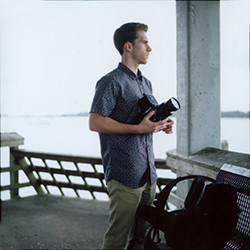 Daniel Seth Kraus
Daniel Seth Kraus
Daniel Seth Kraus‘s work blends historical research with photographic practice to deepen our understanding of people and places. Currently his research investigates faith and work in the American South. Kraus’s work has been featured in numerous print and online publications, including Fraction Magazine, SeeSaw Magazine, Oxford American, and Aint Bad Magazine. His photographs have been exhibited in national and international juried exhibitions, including one at the Morris Museum of Art in Augusta, Georgia. He earned a BFA in photography and a BA in history from the University of North Florida in Jacksonville and is pursuing a MFA in photography at the Tyler School of Art at Temple University in Philadelphia, Pennsylvania.
FELLOW IN ART HISTORY
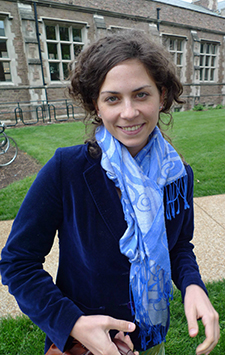 Sara Blaylock
Sara Blaylock
Sara Blaylock will complete her PhD in visual studies at the University of California, Santa Cruz, in spring 2017. To date, the bulk of her research has concerned the experimental film, art, and visual culture of the German Democratic Republic during the 1980s. Her dissertation, “Magnitudes of Dissent: Art from the East German Margins,” focuses on how photography and film, body-based practices, print media, and galleries addressed issues of representation, performativity, and collectivity. It argues that experimental practice in a 1980s GDR was not only an antidote for but also an interpretation of a weakening state—a foil and a mirror to official culture.
Blaylock’s dissertation research has been supported by the German Academic Exchange Service and the Rosa Luxemburg Foundation, as well as by numerous grants from the University of California, Santa Cruz. She has published in numerous academic forums. Most recently, an article appeared in Gradhiva, a French-language journal of art history and anthropology, and Blaylock contributed an essay in both German and English to the catalogue for the exhibition Gegenstimmen. Kunst in der DDR 1976–1989 [Voices of Dissent: Art in the GDR 1976–1989], held at the Martin-Gropius-Bau in Berlin. Another article, “Bringing the War Home to the United States and East Germany: In the Year of the Pig and Pilots in Pajamas,” will appear in Cinema Journal later this year.
Blaylock was recently invited to codirect the International Association for Visual Culture, a scholarly organization that encourages inquiry and debate within the field and that advocates the critical and theoretical expansion of visual-culture studies in academic and artistic venues. She looks forward to helping to advance and strengthen the association’s vision.
HONORABLE MENTIONS IN VISUAL ART AND ART HISTORY
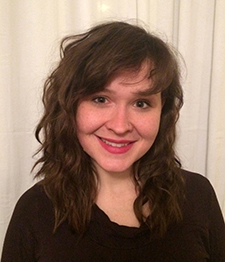 Allison Rose Craver
Allison Rose Craver
Allison Rose Craver will complete her MFA, with a concentration in ceramics, at Ohio State University in in Columbus in May 2017. Craver grew up in East Aurora, New York, and earned a BFA in 2010 from New York State College of Ceramics at Alfred University in Alfred. A year later she studied as a special student at the University of Wisconsin, Madison. Craver has shown her work nationally, including exhibitions at the Archie Bray Foundation for the Ceramic Arts in Helena, Montana, and the Arrowmont School of Arts and Crafts in Gatlinburg, Tennessee. In 2014 she was invited to demonstrate in the Process Room at the annual National Council on Education for the Ceramic Arts conference in Milwaukee. Craver’s work is process driven, using ceramics materials in conjunction with fiber and found objects to explore the nature of care and work.
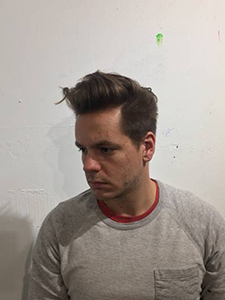 Andrew Jilka
Andrew Jilka
Andrew Jilka was born in in 1986 to a working-class home in Salina, Kansas. The son of a bus driver and a lunch lady, Jilka has been employed as a fast-food worker, a cigarette warehouse stocker, a furniture deliveryman, a Hewlett-Packard call-center representative, a bartender, and later an assistant to the artist Tom Sachs. After selling his Camaro, he enrolled at the University of Kansas in Lawrence, where he received a BFA in printmaking in 2009, as well as a scholarship to study printmaking at Hongik University in Seoul, Korea. Jilka’s work is greatly influenced by the instabilities and anxieties of his Midwestern upbringing. His painting is an attempt to reconcile the “high” of the history and lineage of contemporary painting with the Walmart culture he was raised in. Jilka approaches painting with both the deference of Brahms and the irreverence of the Ramones—and perhaps a touch of Taylor Swift. His work has been shown in group and solo exhibitions in Kansas City, Atlanta, New York, and Seoul. He is currently an MFA candidate at the School of Visual Arts in New York.
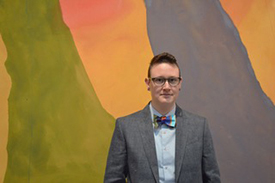 Lex Lancaster
Lex Lancaster
Lex Morgan Lancaster is a PhD candidate in the Department of Art History at the University of Wisconsin, Madison, where they will complete their degree in May 2017. Lancaster’s dissertation, “Dragging Away: Queer Abstraction in Contemporary Art,” investigates abstraction as a tactic of queering in the work of contemporary artists who deploy nonrepresentational form for political ends. Their related article, “Feeling the Grid: Lorna Simpson’s Concrete Abstraction,” was published in ASAP/Journal (2017), and “The Wipe: Sadie Benning’s Queer Abstraction” is forthcoming in Discourse: Journal for Theoretical Studies in Media and Culture. Lancaster is chairing the session on “New Materialisms in Contemporary Art” at CAA’s 2017 Annual Conference in New York.
Lancaster received their BA in art history from Case Western Reserve University in Cleveland, Ohio. They have assisted with exhibitions and public programs at the Cleveland Museum of Art as coordinator of teen programs and intern to the curator of contemporary art, and at the National Gallery of Art in Washington, DC, as a paid summer intern in the Department of Photographs. At the University of Wisconsin, Madison, Lancaster curated the exhibition Our House! Unsettling the Domestic, Queering the Spaces of Home at the Chazen Museum of Art.
2017 Recipients of CAA’s Awards for Distinction
posted by admin — January 09, 2017
CAA announces the recipients of the 2017 Awards for Distinction, which honor the outstanding achievements and accomplishments of individual artists, art historians, authors, conservators, curators, and critics whose efforts transcend their individual disciplines and contribute to the profession as a whole and to the world at large.
CAA will formally recognize the honorees at a special awards ceremony to be held during Convocation at the 105th Annual Conference in New York, on Wednesday, February 15, 2017, at 5:30 PM. See the conference website for full details.
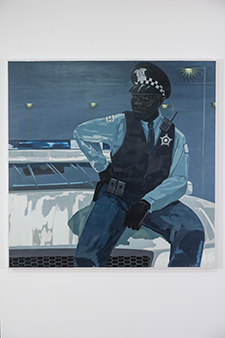
Kerry James Marshall, Untitled (policeman), 2015, acrylic on PVC panel, 60 x 60 inches, 60 9/16 x 60 1/2 x 2 3/4 inches (framed) © Kerry James Marshall. Courtesy of the artist and Jack Shainman Gallery, New York.
Among the winners this year is Kerry James Marshall, recipient of the 2017 CAA Artist Award for Distinguished Body of Work. In his 35-year career painting and making art, Marshall has depicted the African American experience through a medium that has often overlooked the lives of black Americans. His current retrospective at the Met Breuer, titled “Kerry James Marshall: Mastry” (October 25, 2016–January 29, 2017), brings together nearly 80 works by Marshall. Holland Cotter in The New York Times wrote of the show glowingly: “Mr. Marshall has absorbed enough personal history, American history, African-American history and art history to become one of the great history painters of our time.”
Kerry James Marshall biography
Faith Ringgold, the winner of the 2017 CAA Distinguished Artist Award for Lifetime Achievement, is widely considered one of the most influential living African American artists. Born in Harlem in 1930, she is an artist, feminist, activist, and educator who makes use of a variety of media, including painting, quilts, sculpture, performance, and children’s books. Civil Rights, racial justice, feminism, and art history are consistent themes. Ringgold earned BS and MA degrees in art from the City College, the City University of New York, and taught in the NYC public school system for almost twenty years. Since the 1970s Ringgold has been an activist and cofounder of several feminist and antiracist organizations, along with artist Poppy Johnson, art critic Lucy Lippard, and her daughter Michelle Wallace, among others.
Full list of 2017 CAA Awards for Distinction recipients
Charles Rufus Morey Book Award
Kishwar Rizvi
The Transnational Mosque: Architecture and Historical Memory in the Contemporary Middle East
University of North Carolina Press
Alfred H. Barr Jr. Award
Ruth Fine, ed.
Procession: The Art of Norman Lewis
Pennsylvania Academy of the Fine Arts, in association with the University of California Press
Alfred H. Barr Jr. Award for Smaller Museums, Libraries, Collections, and Exhibitions
Carmella Padilla and Barbara Anderson, eds.
A Red Like No Other: How Cochineal Colored the World
Skira Rizzoli, in association with the Museum of International Folk Art
Arthur Kingsley Porter Prize
Christine I. Ho
“The People Eat for Free and the Art of Collective Production in Maoist China”
The Art Bulletin, September 2016
Frank Jewett Mather Award for Art Criticism
Laura U. Marks
Hanan al-Cinema: Affections for the Moving Image
MIT Press
Distinguished Feminist Award
Joan Marter
Art Journal Award
Amy A. DaPonte
“Candida Höfer’s Türken in Deutschland as ‘Counter-publicity’”
Art Journal, Winter 2016
Distinguished Teaching of Art Award
Virginia Derryberry
Distinguished Teaching of Art History Award
Patricia Mainardi
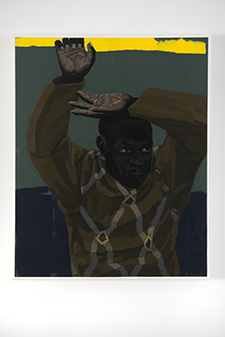
Kerry James Marshall, Untitled (Looking Man), 2016, acrylic on PVC panel, 30 1/2 x 24 1/2 inches, © Kerry James Marshall. Courtesy of the artist and Jack Shainman Gallery, New York.
Artist Award for Distinguished Body of Work
Kerry James Marshall
Distinguished Artist Award for Lifetime Achievement
Faith Ringgold
CAA/American Institute for Conservation Award for Distinction in Scholarship and Conservation
Tom J. S. Learner
Morey and Barr Award Finalists
CAA recognizes the 2017 finalists for the Charles Rufus Morey Book Award and the Alfred H. Barr Jr. Awards for their distinctive achievements:
Charles Rufus Morey Book Award Finalists
- Niall Atkinson, The Noisy Renaissance: Sound, Architecture, and Florentine Urban Life, Pennsylvania State University Press
- Elizabeth Kindall, Geo-Narratives of a Filial Son: The Paintings and Travel Diaries of Huang Xiangjian (1609–1673), Harvard University Asia Center
Alfred H. Barr Jr. Award Finalists
- Helen Molesworth, ed., Kerry James Marshall: Mastry, Museum of Contemporary Art, Chicago, and Skira Rizzoli (honorable mention)
- Barbara Haskell and Harry Cooper, Stuart Davis: In Full Swing, National Gallery of Art, Whitney Museum of American Art, and DelMonico Books
- Alisa LaGamma, Kongo: Power and Majesty, Metropolitan Museum of Art
- Adrian Sudhalter, Dadaglobe Reconstructed, Kunsthaus Zürich and Scheidegger & Spiess
Alfred H. Barr Jr. Award for Smaller Museums, Libraries, Collections, and Exhibitions Finalists
- Andreas Marks, ed., Tōkaidō Texts and Tales: Tōkaidō “gojūsan tsui” by Kuniyoshi, Hiroshige, and Kunisada, University Press of Florida (honorable mention)
- Zdenka Badovinac, Eda Čufer, and Anthony Gardner, eds., NSK from “Kapital” to Capital: Neue Slowenische Kunst—An Event of the Final Decade of Yugoslavia, Moderna galerija and MIT Press
- Geoffrey Batchen, Emanations: The Art of the Cameraless Photograph, Govett-Brewster Art Gallery and DelMonico Books
- Valérie Rousseau, Art Brut in America: The Incursion of Jean Dubuffet, American Folk Art Museum
Contact
For more information on the 2017 Awards for Distinction, please contact Tiffany Dugan, CAA director of programs. Visit the Awards section of the CAA website to read about past recipients.
Staff Interview: Katie Apsey
posted by CAA — December 19, 2016
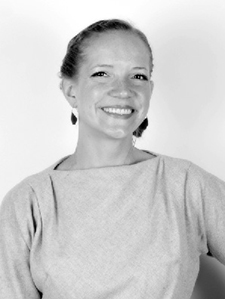
Katie Apsey
The next in a series of interviews with staff members is a conversation with Katie Apsey, CAA manager of programs.
How long have you worked at CAA?
I have worked at CAA just over one year now. I originally started in the Publications Department as data coordinator for the graduate-school directories and moved over to the Programs Department when Lauren Stark left her position to pursue work in the archives field.
What do you do at CAA?
Many different things! I do the administrative work for all programs related to the conference: session submissions for the Annual Conference Committee’s review, ARTexchange applications, submissions to the various conference publications and the conference website, special events, business meetings, poster sessions, appointments for mentoring sessions, and more! I also help the juries for the annual Awards for Distinction as well as the conference travel grants. Both are quite rewarding.
What does CAA mean to you?
I became a member of CAA long ago when I graduated with a BA in photography and was searching for my first job. At that point in my career, membership was a way for me to determine the state of the field—what kind of jobs and opportunities and career paths there were for me as a young artist. As my career shifted away from art practice and toward museum work and then art history, CAA became a network for keeping up with peers rather than a resource for the job market.
Can you talk about one of your favorite member moments?
It would be too hard to pick one moment of engagement with a member. While working in the Speaker Ready Room I overhear amazing conversations between session chairs and their speakers while they prepare before or recombobulate after their sessions. Observing the uniqueness of each group and noting the different approaches that session chairs take when creating thoughtful panels is equally inspiring. I always learn things about new theories, historiographies, artists, and exhibitions through osmosis while I am running around doing management tasks!
What do you like best about the arts and working in the arts?
This sounds so cliché, but I like being surrounded by creative people and getting inspired and challenged by them: people who know that the “right” or “best” answer is an ambiguous, moving target; people who, after they are done with the business of an email, send me a link to an article, exhibition, or artist’s webpage; people who know the value of thinking deeply or uniquely; and people who do what they do not for the money but for their belief in the importance of discourse.
Do you have a favorite moment from the Annual Conference?
When I attended as a regular member, my favorite moments were seeing my academic heroes speak or listening to the annual Distinguished Artist Interviews. Now that I work for CAA “behind the scenes,” my favorite moments have become working with the room monitors onsite. These are the people that check conference badges at the doors to session rooms. I enjoy hearing what they are working on with their art or scholarship, pointing them toward sessions they may have overlooked in the program, and taking in the stories of the retired professors who are volunteering their time.
You are writing your dissertation on Native American art, and the CAA office is up the street from the Smithsonian Institution’s National Museum of the American Indian (NMAI). Have you visited the museum often since working here?
Yes, I feel very lucky to be so close to the museum’s New York branch. One of the main curators there, Kathleen Ash-Milby, is a powerhouse who focuses on contemporary Native American art, which is what I write about most often, so I value seeing the exhibitions at the George Gustav Heye Center as soon as they open. The museum also has the film and media center with rare digital content and a cozy educational library that I like to visit on my lunch break. It is the perfect spot for even fifteen minutes of reading outside the office, or for watching a VHS tape from the NMAI collection of performances that hasn’t been digitized yet! A lot of tourists visit lower Manhattan, but many of them don’t know they can go inside the Customs House—the building that houses the museum—for free, so it still remains a quiet refuge with rotating exhibitions and frequent nighttime events. In fact, I attended a MuseumHue event there about art and social change just a few weeks ago!
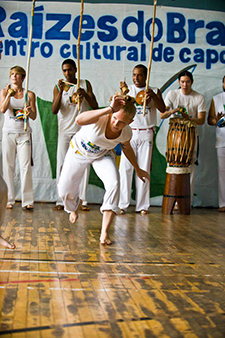
Katie Apsey practices the Brazilian martial art of capoeira (photograph provided by Capoeira Vida)
You have performed and taught dance. What are your specialities and favorites?
Oh, I could go on for hours about this. I love whatever classes I can take. As a company dancer, I felt like contemporary dance challenged me the most intellectually. It really pushes the boundaries of expansive concepts like “movement,” “performance,” and “choreography.” Closer to my heart, though, are samba dance and the Brazilian martial art of capoeira, both of which feed my soul. Samba is physically demanding yet joyful and amazingly fun to perform. I love looking into the crowd from the stage and seeing hundreds of people smiling back or even dancing themselves because they can’t sit still. Conceiving of and making new costumes uses my creativity in a different way.
There are many types of samba—including carnival mas group/Rio-style samba, Bahian-style samba de roda, and Orisha dances associated with Candomblé—that speak to different needs, abilities, histories, lives, and energies. Dance is an art form that grows with a person over time and answers their needs in the moment. Capoeira is the same way. It is actually a martial art, not dance. It challenges both my body (I swear someday I will still be able to learn a back flip … in my thirties) as well as my mind (in the strategy of the game). Capoeira even challenges my musical abilities in having to learn all the songs and instruments while trying to sing in tune!
An Interview with Mary Miller, CAA 2017 Convocation Speaker
posted by Christopher Howard — December 06, 2016
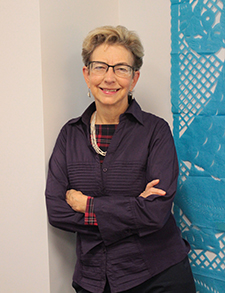
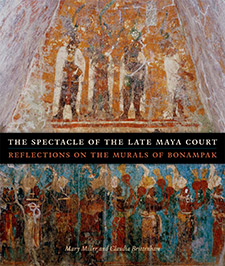
Mary Miller, Sterling Professor of History of Art at Yale University in New Haven, Connecticut, will deliver the keynote address during Convocation at the 2017 Annual Conference, to be held at the New York Hilton Midtown in Manhattan. Free and open to the public, Convocation takes place on Wednesday, February 15, 5:30–7:00 PM. The event will include the presentation of the annual Awards for Distinction and be followed by the conference’s Opening Reception.
Miller earned an AB in 1975 at Princeton University in Princeton, New Jersey. Six years later she completed her PhD at Yale, joined the faculty there, and has remained at the school ever since. Miller was recently appointed as senior director of the Institute for the Preservation of Cultural Heritage at Yale. She also served as dean of Yale College from 2008 to 2014 and has taken many other professorial and administrative roles over the years.
Miller is the author of The Murals of Bonampak (1986), The Art of Mesoamerica: From Olmec to Aztec (1986), and Maya Art and Architecture (1999). A frequent collaborator, she wrote The Gods and Symbols of Ancient Mexico and the Maya (1993) with Karl Taube and edited A Pre-Columbian World (2006) with Jeffrey Quilter and The Aztec Calendar Stone (2010) with Khristaan D. Villela. In recent years Miller edited Painting a Map of Sixteenth-Century Mexico City (2012), a study of a rare indigenous map in Yale’s Beinecke Library, with Barbara Mundy and completed The Spectacle of the Late Maya Court: Reflections on the Murals of Bonampak (2013) with Claudia Brittenham.
Miller has written essays for both of CAA’s scholarly print publications. In “A Re-examination of the Mesoamerican Chacmool,” published in The Art Bulletin in 1985, Miller proposed Maya sources for “the form, location, variety, and iconography” of the chacmool, the Mesoamerican stone sculptures of reclining male figures associated with war and sacrifice; previous scholarship had assumed they were of Central American origin and introduced to the Maya during the Toltec era.[1] In “Shaped Time,” published in Art Journal in 2009, Miller considered George Kubler’s 1962 landmark study The Shape of Time, “so rich in its textured treatment of the ways that streams of history and art-making intersect.”[2] She drew on her deep knowledge of ancient Mesoamerica to contextualize the book in relation to both Kubler’s research and other postwar scholarship in the field.
In 1988 Miller and Linda Schele accepted CAA’s Alfred H. Barr Award for museum scholarship for The Blood of Kings: Dynasty and Ritual in Maya Art (1986). The book, with photographs by Justin Kerr, was the catalogue for a traveling exhibition organized by Schele and Miller for the Kimbell Art Museum in Fort Worth, Texas.
Among Miller’s many accolades are a John Simon Guggenheim Memorial Fellowship and membership in the American Academy of Arts and Sciences. In 2010 she gave the fifty-ninth A. W. Mellon Lectures in the Fine Arts at the National Gallery of Art in Washington, DC—one of the highest honors in American art history.
CAA communicated with Miller via email last month. Here’s what she had to say.
How has teaching art history changed over the last twenty years?
Well, that takes us back to 1996, and just about then I volunteered to be the departmental pioneer (or guinea pig, take your pick) for digital images. I had to wrestle with the visual resources department to be allowed to build my own PowerPoints in that first iteration! And before I knew it, the slide cabinets had departed for remote storage. But that is the technical change. There are other changes that come along, especially in terms of what it is students bring to the class, and how the visual image is beginning to be the center for most of them.
What were the most important lessons you learned while serving as a dean?
You don’t want to know most of them! But, seriously, I gave a lot of thought to grading while dean. I also paid attention to learning outcomes, especially the importance of short assignments and detailed feedback early in the term. And I committed to developing opportunities for public speaking for students in class—a critical part of education but rarely intentionally instructed these days.
What does your current research concern?
My current research is focused on the gold disks of the Sacred Cenote at Chichén Itzá. The only serious study of the full set of them was published in 1952, although everyone knows them. Or thinks they know them. They’ve turned out to be even more fascinating than I though they’d be: the material—gold—was entirely new to the Maya of the ninth century, the technique of executing imagery on it entirely new as well. And then the imagery itself quite distinct. All but one of the disks were burned, ripped into pieces, crumpled, stomped upon, and then hurled into the Cenote (and the “one” is distinct only in not having been torn apart). There is meaning embedded in that dramatic ending! But three other projects have been developing along the edges. I keep all the files and notes for one of them—a history of the dealers, collectors, and materials that are critical to the formation of pre-Hispanic art as a field in the United States, 1940 onward—in a folder I call “The Rabbit Hole,” which tells you it is a wild and winding journey.
What was your first CAA Annual Conference experience like?
Oh, gosh. I think I was the driver of a group of Yale graduate students to DC [in 1979] and I am almost certain that George Shackelford was in the car. I’d had the bad fortune to have my wallet relieved of folding bills while I snoozed in the Yale Art and Architecture Library, so I scrounged together $40 to make the trip. I slept in the basement of a house some of my college friends shared near the Washington Cathedral, and then I hiked down Mass Ave to the Hilton—a good distance, I can assure you. I attended a session chaired by Joel Snyder that thrilled me. I watched a grad-school colleague give a presentation on African time, among other talks, and I had a lot of fun.
What are two or three pressing issues that both artists and academics share?
We all share the problem of the Google search: no matter what I am looking for, once I start searching for images, by page three the algorithm is offering me pictures of Van Gogh’s Sunflowers. If I am looking for a work of art, then surely I must want Sunflowers!
Seriously, I think the most pressing issue we share is that of conservation and preservation. How can the past—or the present—be preserved for the future?
Can you give us a teaser of what you will discuss at Convocation?
Well, last year I gave a talk at the Clark Art Institute in which I said art history can play a different role in twenty-first-century humanities than it did in twentieth-century humanities. I’ve developed these ideas more fully—and I hope I have some interesting things to say to the community of art historians, and the community of artists!
Notes
[1] See Mary Ellen Miller, “A Re-examination of the Mesoamerican Chacmool,” The Art Bulletin 67, no. 1 (March 1985): 7–17.
[2] See Mary Miller, “Shaped Time,” Art Journal 68, no. 4 (Winter 2009): 71–77.


